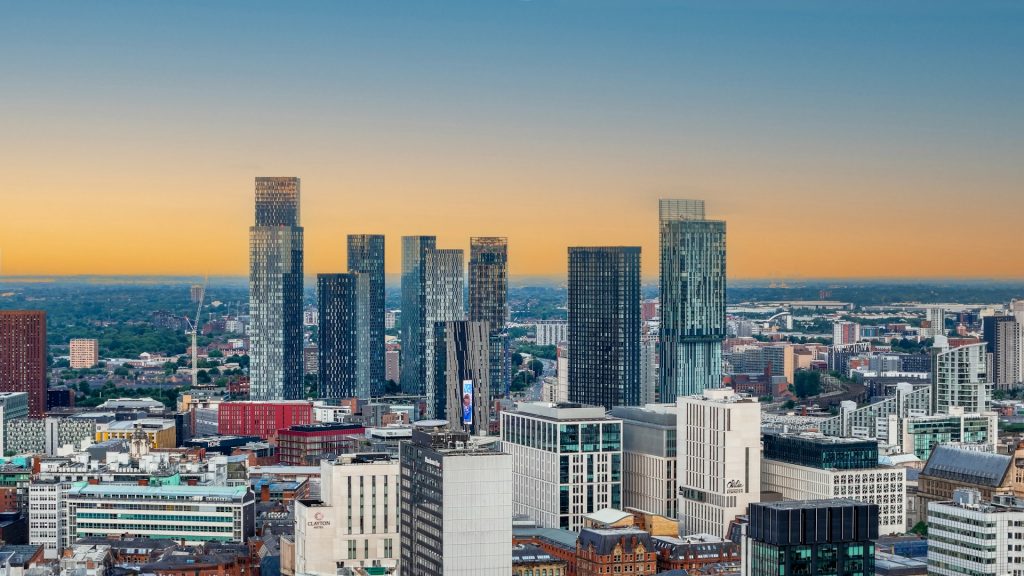The Manchester Buy-to-Let Market in 2025: A Realistic Look at Growth, Yields, and New Developments

The Manchester buy-to-let market in 2025 is booming—but not without nuance. While the city continues to outperform much of the UK in terms of rental yields and capital growth, the sheer volume of new developments and shifting tenant demographics mean investors must tread strategically. This blog explores the current state of the market, backed by recent data, and highlights key developments shaping Manchester’s property landscape.
Manchester: Still the UK’s Buy-to-Let Powerhouse?
Often dubbed the “Capital of the North,” Manchester has long been a magnet for property investors. In 2025, it remains one of the UK’s top-performing cities for buy-to-let, thanks to a combination of strong rental demand, ambitious regeneration, and a diverse economic base.
According to JLL’s UK Residential Forecast, Manchester property prices are expected to rise by 29.4% over the next five years, outpacing national averages. Rental yields in the city average between 6–7%, significantly higher than London’s 3.5%. In areas like Salford and Fallowfield, yields can reach 8% or more, driven by student and young professional demand.
What’s Driving the Market?
Several factors underpin Manchester’s continued buy-to-let appeal:
- Population Growth: Manchester’s population is expanding rapidly, with young professionals and students making up a large share. Over 120,000 students attend the city’s universities, ensuring year-round rental demand.
- Economic Diversity: The city’s employment base spans tech, finance, media, and healthcare. MediaCityUK, home to the BBC and ITV, anchors Salford’s growth.
- Transport Infrastructure: Manchester Airport, the Metrolink network, and HS2 (pending final approval) enhance connectivity and investor confidence.
- Regeneration Projects: From Ancoats to Victoria North, regeneration is transforming entire districts into high-yield investment zones.
A Surge in Developments: Opportunity or Oversupply?
Manchester is experiencing an unprecedented wave of residential development. While this creates opportunities for investors, it also raises questions about long-term rental saturation and price stability.
According to Fabrik Property Group, Manchester has one of the highest volumes of new-build activity in the UK, yet demand continues to outstrip supply in key areas. The city’s skyline is dotted with cranes, and off-plan investment remains popular.
Here are some standout developments reshaping the market:
1. Berkeley Square Manchester (The Heaton Group)
Located near Salford Quays, this development offers rental yields up to 7%, with prices starting at £240,000. It’s designed for long-term value and appeals to professionals working in MediaCityUK.
2. Victoria Riverside (FEC Group)
Part of the Victoria North regeneration zone, this project includes over 4,000 homes and aims to transform the area into a vibrant residential hub. It’s one of Manchester’s largest regeneration schemes, backed by Manchester City Council.
3. Oxygen Tower (Alliance Investments)
A striking 32-storey tower in Piccadilly, Oxygen offers luxury apartments with strong rental appeal. Its proximity to Manchester Piccadilly station makes it ideal for commuters and city professionals.
4. The Blade and Three60 (Renaker Build)
These skyscrapers form part of the Deansgate Square cluster, offering high-end apartments with panoramic views. Renaker is one of Manchester’s most prolific developers, known for delivering premium city-centre living.
5. Castle Wharf (Salboy)
Located in Castlefield, this boutique development blends heritage architecture with modern design. Salboy, co-founded by Fred Done of Betfred, has a strong track record in Manchester’s residential sector.
Investment Hotspots in 2025
Not all areas of Manchester offer the same returns. Here’s a snapshot of the city’s top buy-to-let zones:
| Area | Average Yield (%) | Tenant Demand | Key Attraction |
|---|---|---|---|
| Salford | 7–8% | High | MediaCityUK, BBC, ITV |
| Ancoats | 6–7% | Very High | Trendy, young professionals |
| Fallowfield | 8%+ | Extremely High | Student area, University of Manchester |
| Trafford/Altrincham | 5–6% | High | Family-friendly, top schools |
Sources: Heaton Group, JLL, Rightmove
Risks and Considerations
Despite the optimism, investors should approach Manchester’s market with a realistic lens. Here are some factors to weigh:
- Oversupply in Certain Districts: Areas like the city centre and Salford Quays have seen rapid development. While demand remains strong, rental competition is increasing.
- Off-Plan Uncertainty: Buying off-plan can offer discounts and early access, but delays and market shifts pose risks.
- Tenant Expectations: With more luxury units entering the market, tenants expect high-spec finishes, amenities, and flexible lease terms.
- Regulatory Changes: Landlords must stay abreast of evolving legislation, including energy efficiency standards and tenancy reforms.
Tips for Buy-to-Let Success in Manchester
To maximise returns and minimise risk, consider the following strategies:
- Target Underserved Niches: Student housing, co-living spaces, and short-term lets can offer higher yields.
- Work with Reputable Developers: Choose developers with a proven track record and transparent delivery timelines.
- Focus on Transport Links: Properties near Metrolink stations or major bus routes tend to attract stable tenants.
- Consider Property Management: Professional management can reduce void periods and improve tenant retention.
- Stay Informed: Monitor local planning applications, council initiatives, and market forecasts to stay ahead.
Manchester’s buy-to-let market in 2025 is dynamic, fast-moving, and full of potential. With strong rental yields, ambitious regeneration, and a growing population, the city remains one of the UK’s most attractive investment destinations. However, the explosion of new developments means investors must be selective, informed, and realistic.
By focusing on high-demand areas, working with trusted developers, and understanding tenant needs, landlords can build resilient portfolios that thrive in Manchester’s evolving landscape.
